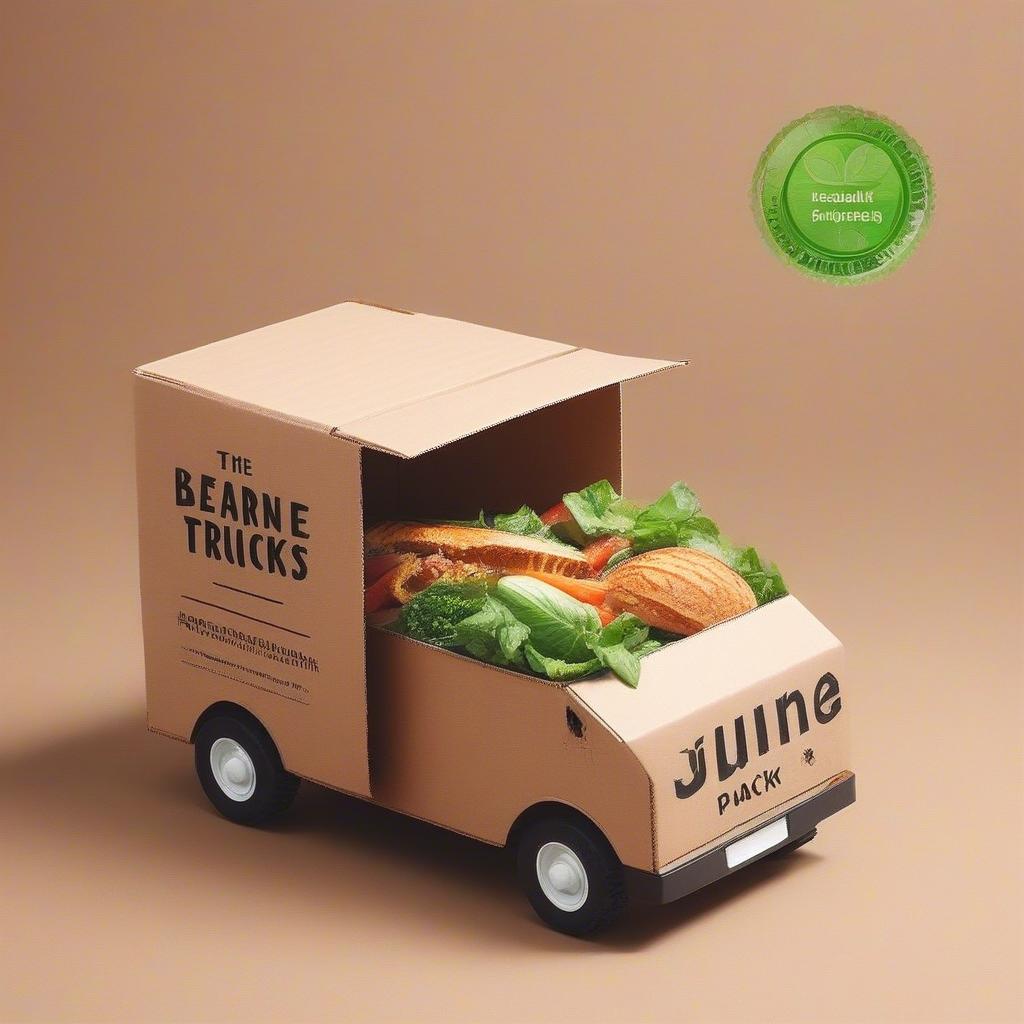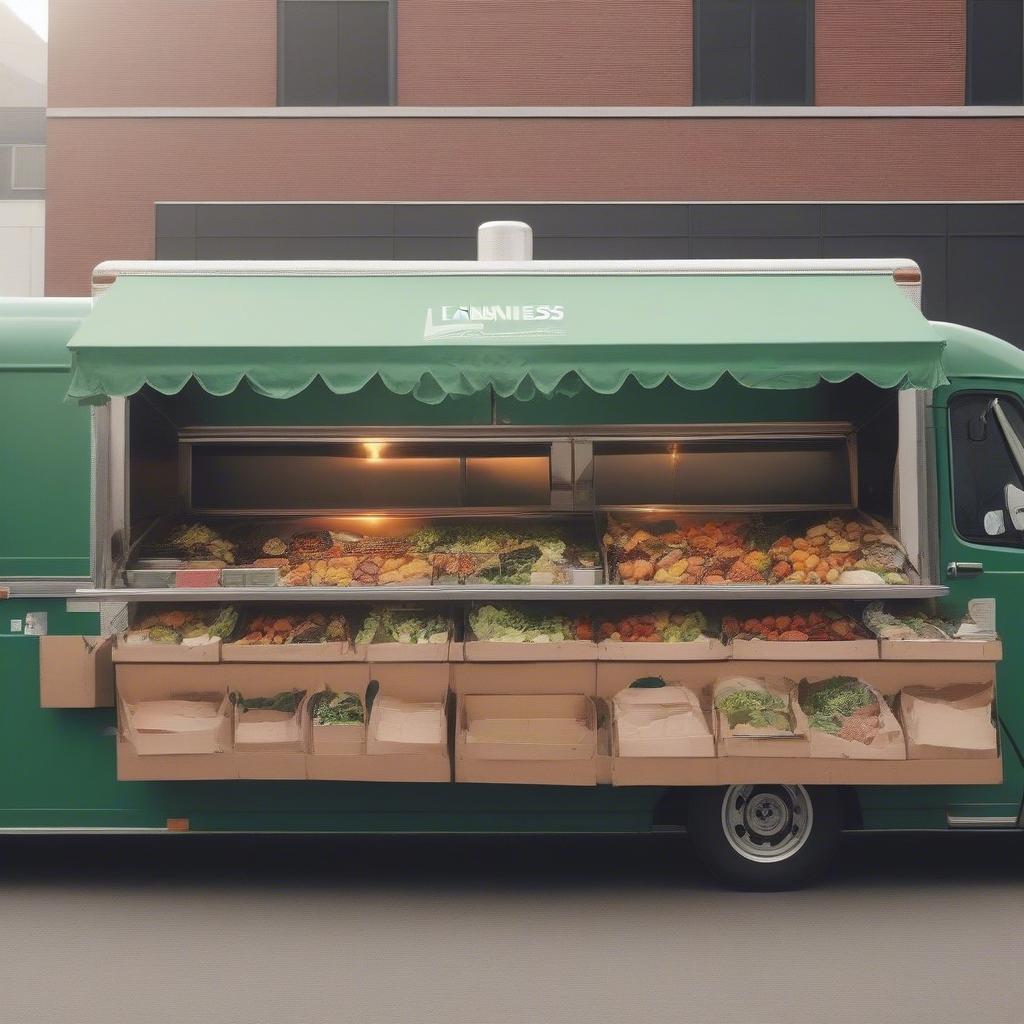
Running a food truck is an adventure, a whirlwind of delicious smells and happy customers. But what if you could make that adventure kinder to the planet? That’s where eco-friendly practices come in. It’s not just about feeling good; it’s about building a sustainable food truck that thrives and contributes to a healthier world. Let’s dive into how you can transform your mobile kitchen into a beacon of green business.
Why Go Green? The Benefits of a Sustainable Food Truck
Before we get to the “how,” let’s explore the “why.” Why should your food truck join the ranks of sustainable businesses? It’s more than just a trend; it’s a smart move for your bottom line and the world around you.
1. Attract Eco-Conscious Customers
Today’s consumers are increasingly aware of their environmental impact. They’re looking for businesses that share their values. By embracing eco-friendly practices, you’re not just doing the right thing; you’re attracting a loyal customer base that appreciates your commitment to sustainability. They’ll feel good about spending their money with you, knowing they’re supporting a business that cares.
2. Boost Your Brand Image
Being a green business elevates your brand perception. It tells customers you’re innovative, forward-thinking, and responsible. A sustainable food truck stands out in a crowded market, projecting an image of quality and integrity. It’s a powerful differentiator that can help you build a strong and respected brand.
3. Reduce Operational Costs
Going green often means being more efficient. From energy-saving equipment to reduced waste, many eco-friendly practices can lead to lower operating costs. This boost to your profit margin can make a significant difference over time.
4. Minimize Your Environmental Footprint
This is perhaps the most crucial reason. The food industry can have a significant environmental impact. By adopting sustainable food truck practices, you’re minimizing your carbon footprint, conserving resources, and helping to create a more sustainable future. You’re part of the solution, not the problem.
5. Future-Proof Your Business
Sustainability is no longer a niche concept; it’s becoming the norm. By embracing eco-friendly practices now, you’re positioning your business to thrive in the long term. You’ll be prepared for future regulations and changing consumer preferences.
Key Areas to Focus on for Sustainable Food Trucks
Transforming your food truck into a model of sustainability involves making changes across several areas of your operation. Let’s break them down:
1. Sustainable Sourcing
What ingredients you use and where they come from play a significant role in your environmental impact.
a. Local and Seasonal Ingredients
- What: Prioritize purchasing ingredients from local farmers and producers. Choose produce that’s in season, reducing the need for long-distance transportation and artificial growing methods.
- Why: Reduces your carbon footprint, supports your local economy, and often provides fresher, more flavorful ingredients.
- How:
- Research Local Farms: Visit farmers markets, research online directories, and connect with local growers directly.
- Build Relationships: Develop strong relationships with local suppliers to ensure a consistent supply of fresh produce.
- Menu Planning: Design your menu around what’s available seasonally. This may mean changing your menu throughout the year, but it’s a great way to showcase local ingredients.
b. Organic and Fair-Trade Options
- What: Where possible, choose organic ingredients grown without harmful pesticides and fertilizers. Opt for fair-trade certified products to ensure farmers are paid a fair wage.
- Why: Reduces exposure to harmful chemicals, promotes biodiversity, and supports ethical labor practices.
- How:
- Identify Key Ingredients: Start by focusing on a few key ingredients that are easily sourced organically or fair-trade.
- Partner with Suppliers: Work with suppliers who are committed to organic and fair-trade practices.
- Communicate Transparency: Let your customers know about your commitment to organic and fair-trade ingredients.
c. Mindful Meat Consumption
- What: If your menu includes meat, consider offering smaller portions or incorporating plant-based protein options. Opt for sustainably raised meat from farms that prioritize animal welfare.
- Why: Meat production has a significant environmental impact. Reducing meat consumption can significantly lower your carbon footprint.
- How:
- Introduce Plant-Based Dishes: Create delicious and appealing plant-based menu options.
- Source Responsibly: Partner with farms that practice sustainable animal husbandry.
- Highlight the Benefits: Communicate the benefits of mindful meat consumption to your customers.
2. Waste Reduction
Minimizing waste is crucial for a sustainable food truck. It’s about reducing, reusing, and recycling.
a. Compostable and Biodegradable Packaging
- What: Replace traditional single-use plastic packaging with compostable or biodegradable alternatives made from plant-based materials.
- Why: Reduces plastic waste, which can take hundreds of years to decompose and often ends up polluting oceans and landfills.
- How:
- Research Options: Explore different types of compostable and biodegradable packaging, such as bamboo, paper, and plant-based plastics.
- Consider Cost and Availability: Balance your budget with the availability of sustainable packaging options.
- Educate Your Customers: Inform your customers about your choice of compostable packaging and how it contributes to a more sustainable future.
b. Smart Inventory Management
- What: Track your inventory carefully to avoid food waste due to spoilage or over-ordering.
- Why: Reduces waste and saves money on unnecessary purchases.
- How:
- Use Inventory Software: Implement a simple system or software to track your stock levels.
- Plan Your Purchases: Order only what you need based on your anticipated demand.
- Adjust Menu Based on Inventory: Be flexible and adjust your menu if you have excess ingredients to avoid food waste.
c. Composting and Recycling
- What: Implement a composting program for food scraps and food waste. Set up recycling bins for paper, cardboard, and other recyclable materials.
- Why: Diverts waste from landfills, turning it into valuable compost for gardens and reduces the demand for natural resources.
- How:
- Find a Composting Partner: Connect with local composting facilities or community gardens.
- Set Up Recycling Bins: Provide clearly labeled bins for different types of recyclables.
- Train Your Staff: Ensure your team knows how to properly sort waste and materials.
3. Energy Efficiency
Reducing energy consumption is another vital aspect of running a sustainable food truck.
a. Energy-Efficient Equipment
- What: Invest in energy-efficient appliances, such as LED lighting, high-efficiency refrigeration, and induction cooktops.
- Why: Reduces energy consumption, lowering your operational costs and environmental impact.
- How:
- Prioritize When Buying: Choose energy-efficient models when purchasing or replacing equipment.
- Regular Maintenance: Maintain your equipment regularly to ensure optimal efficiency.
- Consider Solar Power: Explore the possibility of installing solar panels on your truck to generate renewable energy.
b. Smart Energy Practices
- What: Implement energy-saving practices, such as turning off lights and equipment when not in use, and limiting the use of air conditioning.
- Why: Reduces energy consumption and costs, helping to minimize your environmental footprint.
- How:
- Develop a Checklist: Create a checklist of energy-saving practices to be followed daily.
- Train Your Staff: Educate your team about the importance of energy conservation.
- Monitor Your Energy Use: Track your energy consumption and identify areas where you can improve.
4. Water Conservation
Conserving water is essential, especially in areas experiencing water scarcity.
a. Water-Saving Equipment
- What: Install low-flow faucets and spray nozzles. Use water-efficient dishwashing equipment.
- Why: Reduces water consumption and wastewater, minimizing your impact on water resources.
- How:
- Invest in Efficient Fixtures: Replace old faucets and spray nozzles with water-saving models.
- Optimize Dishwashing: Use the shortest wash cycle possible and scrape plates before washing.
- Monitor Water Usage: Track your water consumption and look for ways to reduce it.
b. Smart Water Management
- What: Implement strategies to minimize water use during food preparation and cleaning.
- Why: Reduces water consumption and costs, conserving valuable water resources.
- How:
- Use Buckets Instead of Running Water: Use buckets for soaking or rinsing instead of running water continuously.
- Batch Cooking: Prepare ingredients in batches to reduce the amount of water used during cooking.
- Dry Cleaning Methods: Use dry cleaning methods, such as wiping surfaces, instead of rinsing them.
5. Transportation and Logistics
How you move your truck and manage logistics can also contribute to your environmental footprint.
a. Optimized Routes
- What: Plan efficient routes to minimize fuel consumption and reduce emissions.
- Why: Reduces your carbon footprint and saves money on fuel costs.
- How:
- Use GPS Navigation: Use GPS navigation to plan the most direct and efficient routes.
- Combine Trips: Combine multiple trips into one to reduce mileage.
- Track Fuel Consumption: Monitor your fuel consumption and identify areas where you can optimize your routes.
b. Regular Vehicle Maintenance
- What: Keep your truck well-maintained to ensure optimal fuel efficiency and reduce emissions.
- Why: Improves fuel efficiency, reduces emissions, and extends the life of your vehicle.
- How:
- Regular Checkups: Schedule regular maintenance checks for your truck.
- Tire Inflation: Keep tires properly inflated to improve fuel efficiency.
- Optimize Load: Avoid carrying unnecessary items to reduce the load on your truck.
6. Community Engagement
A sustainable business isn’t just about what you do internally, it’s about engaging with your community.
a. Support Local Initiatives
- What: Partner with local organizations that promote sustainability and environmental protection.
- Why: Strengthens your community and amplifies your positive impact.
- How:
- Donate to Local Causes: Donate a portion of your profits to environmental organizations.
- Volunteer Your Time: Participate in local cleanup events and other sustainability initiatives.
- Promote Local Events: Share and promote environmental initiatives with your customers.
b. Educate Your Customers
- What: Share your sustainability practices with your customers, highlighting your commitment to the environment.
- Why: Creates awareness and encourages customers to adopt more sustainable habits.
- How:
- Use Signage and Menus: Use signage and menu descriptions to communicate your eco-friendly practices.
- Social Media: Share your sustainability efforts on social media.
- Host Workshops: Organize workshops to educate customers about sustainable living.
Implementation: Practical Steps and Tips
Turning your food truck into an eco-friendly business takes time and effort. Here’s a step-by-step guide to help you get started:
- Assess Your Current Practices: Conduct an audit of your current operations to identify areas where you can improve your sustainability practices.
- Set Goals: Define specific, measurable, achievable, relevant, and time-bound (SMART) goals for your sustainability efforts.
- Create an Action Plan: Develop a detailed plan with timelines and responsibilities for achieving your goals.
- Prioritize Actions: Focus on the actions that will have the biggest impact and start with those that are easiest to implement.
- Train Your Team: Educate your staff about your sustainability goals and train them on how to follow sustainable practices.
- Monitor and Evaluate: Regularly track your progress and make adjustments to your plans as needed.
- Celebrate Successes: Acknowledge and celebrate your achievements, both big and small.
Template: Sustainability Action Plan
| Action Item | Goal | Timeline | Responsibility | Resources Needed | Progress |
|---|---|---|---|---|---|
| Switch to Compostable Packaging | Replace 80% of single-use plastic packaging with compostable alternatives | 2 months | Owner | Packaging Suppliers | |
| Source Local Produce | Purchase 50% of produce from local farmers | 3 months | Manager | Local Farm Contacts | |
| Implement a Composting Program | Compost 75% of food waste | 1 month | Staff | Composting Partner | |
| Reduce Energy Consumption by 15% | Implement energy efficient practices | 2 months | Staff | Energy Audit Tools |
Tip: Start small. Don’t try to change everything at once. Focus on making incremental improvements over time. Every small step counts.
How Learn Business Supports Your Sustainable Journey
Learn Business is dedicated to helping businesses, just like yours, thrive. We understand the challenges of running a food truck and are committed to providing you with the tools and resources you need to achieve your sustainability goals. Our tailored guidance and templates will help you streamline your processes and create a robust and sustainable food truck business.
- Customizable Templates: Access a wide range of templates designed specifically for the food truck industry, including sustainable sourcing guides, waste management plans, and energy efficiency checklists. These templates are fully customizable, allowing you to tailor them to your specific needs.
- Expert Guidance: Our team of business experts is available to provide personalized guidance and support on your sustainability journey. We’ll work with you to identify areas for improvement and help you develop strategies to achieve your goals.
- Community of Like-Minded Businesses: Join a community of other business owners committed to sustainability. Share your experiences, learn from others, and connect with potential collaborators.
- Practical Resources: Learn Business provides a wide array of practical resources, including webinars, articles, and case studies that offer valuable insights and guidance on sustainable business practices.
By partnering with Learn Business, you’re not just starting a business; you’re building a sustainable legacy that benefits your community and the planet. We can guide you every step of the way, from developing your action plan to implementing your sustainability practices. We provide customized templates for everything from vendor management to route optimization, designed specifically for food trucks, ensuring your operations are smooth and eco-friendly. We will help you create a brand that resonates with today’s environmentally conscious consumer.
Conclusion: Your Journey to a Greener Food Truck
Building a sustainable food truck business is a journey, not a destination. It requires commitment, creativity, and a willingness to adapt. By adopting eco-friendly practices, you’re not only doing your part to protect the planet, but you’re also creating a stronger, more resilient business that resonates with your customers. Remember, every small step makes a difference. Start today, and watch your food truck blossom into a beacon of sustainable business. Embrace the challenge and become a leader in the world of sustainable food trucks. The planet, and your customers, will thank you.



Leave a Reply